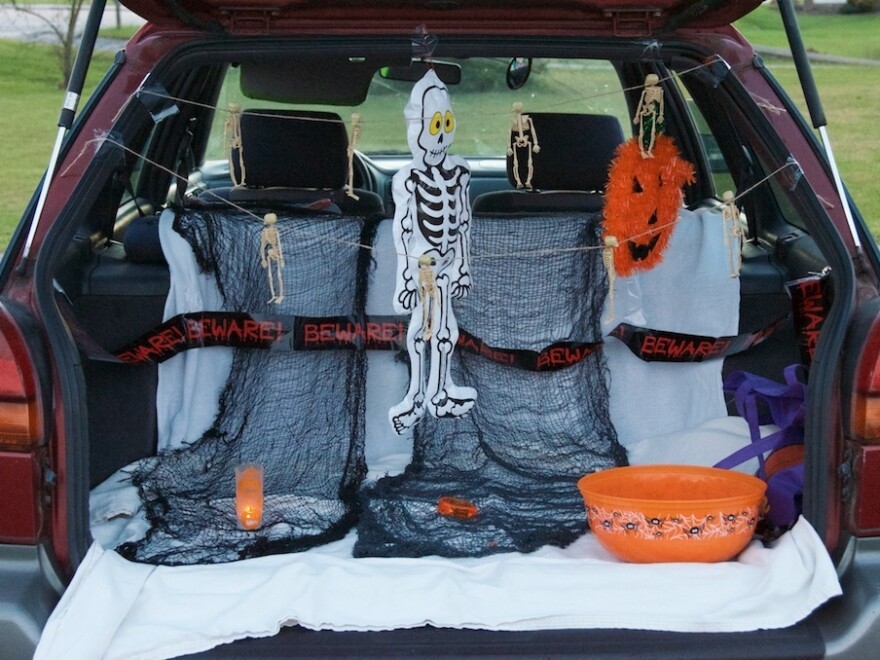This Halloween, some trick-or-treaters, instead of trekking through neighborhoods, will opt for a more stationary form of candy collecting: trunk-or-treating.
Trunk-or-treating is an alternative to trick-or-treating, in which parents and guardians gather their vehicles in one spot, typically a parking lot, open their trunks and give out candy as children walk from car to car.
Some candy-givers decorate their trunks with scenes and themes, such as pumpkin patches, spiderwebs and monsters.
Here's a rundown of how it started and how to find one nearby.
How did it start?
Early mentions of trunk-or-treating date as far back as 1994 and are commonly associated with churches, who present the events as safer alternatives to door-to-door trick-or-treating.
A 1994 article in The Birmingham News, in Alabama, centered on the Hilldale Baptist Church of Center Point, where children up through the sixth grade could participate. The gathering touted attractions such as a ball pit, a game room and prizes, including bicycles.
By 2003, the Providence Presbyterian Church in South Carolina was hosting its second annual trunk-or-treat, with hot dogs served for dinner, according to an article in The Greenville News.

Trunk-or-treating has also been referred to as "Halloween tailgating."
Though often dubbed as the safer option to trick-or-treating, child psychologist David Miller of the University of Albany says there is little evidence pointing to trick-or-treating being dangerous.
Worries such as people giving out poisoned candy and razor blades in apples started in the 1960s and have been debunked.
"I think one of the things about [trick-or-treating] that we don't sufficiently appreciate is a sense of trust we put in our neighbors when kids go out trick-or-treating," he said. "And in most cases, that trust is well-placed."
But he said trunk-or-treating does provide a good option for those who live in rural areas where there are longer distances between homes.
"I don't think that either trick-or-treat or trunk-or-treat — that one is inherently better than the other," he said. "It all comes down to personal preference. It's an enjoyable activity, and it should be fun for people, so whatever works for them is fine."
How do I participate?
Trunk-or-treat events are held at lots of places, including schools, churches, YMCAs, courthouses and even car dealerships.
The events are often listed on Facebook, so that's a good place to start to find one near you. Some of them have games, contests and arts and crafts.
For ideas on decorating your trunk, social media sites such as Pinterest and TikTok can give you do-it-yourself ideas and walk you through instructions on setting them up.
For those who don't want to DIY, several major retailers sell pre-made kits to install on trunks.
Copyright 2023 NPR. To see more, visit https://www.npr.org.



